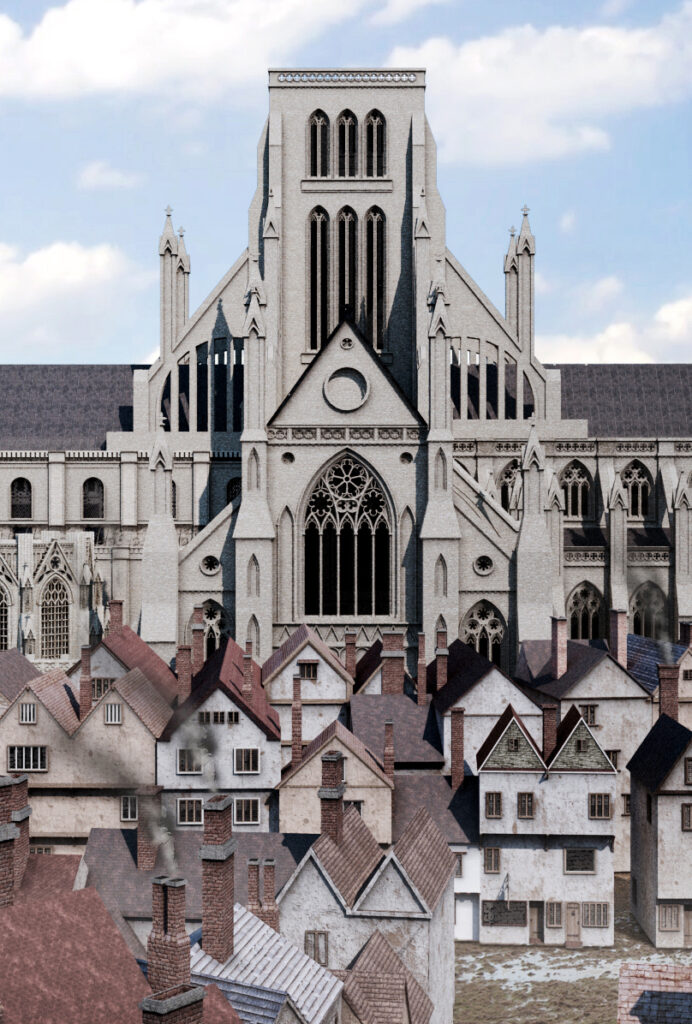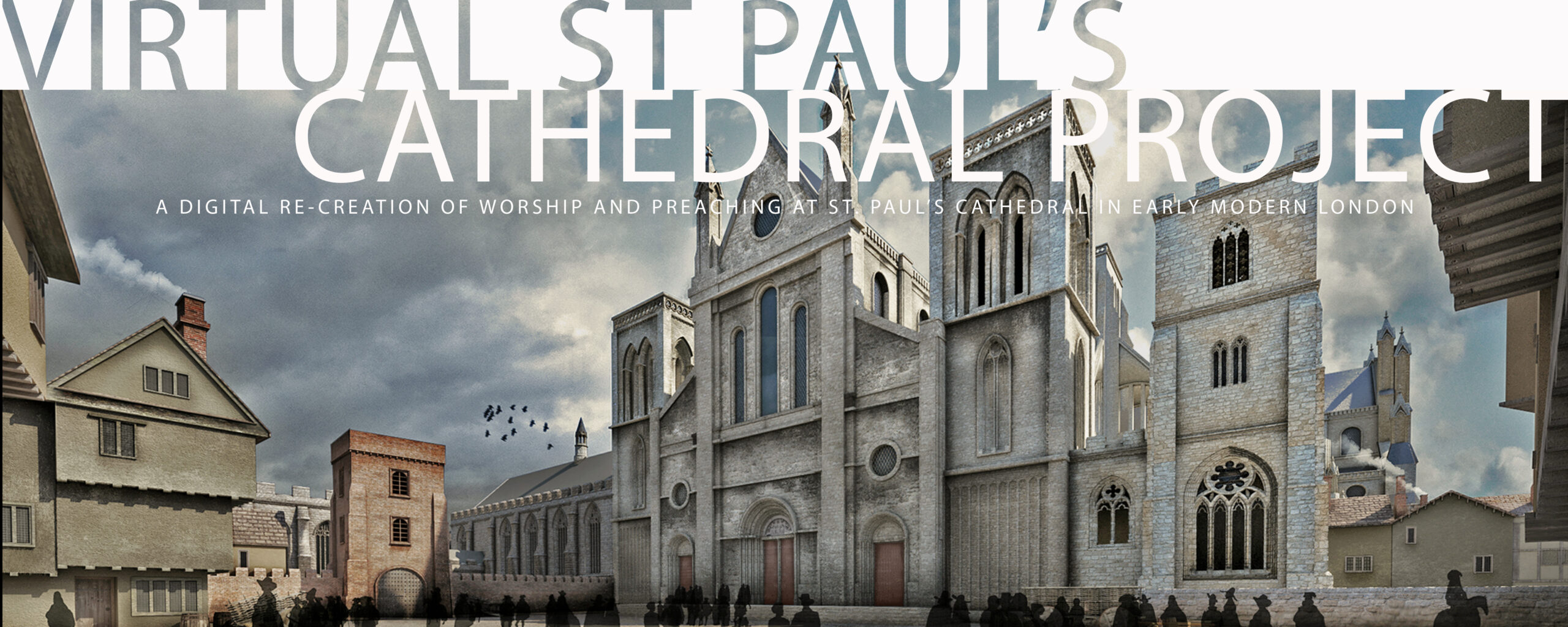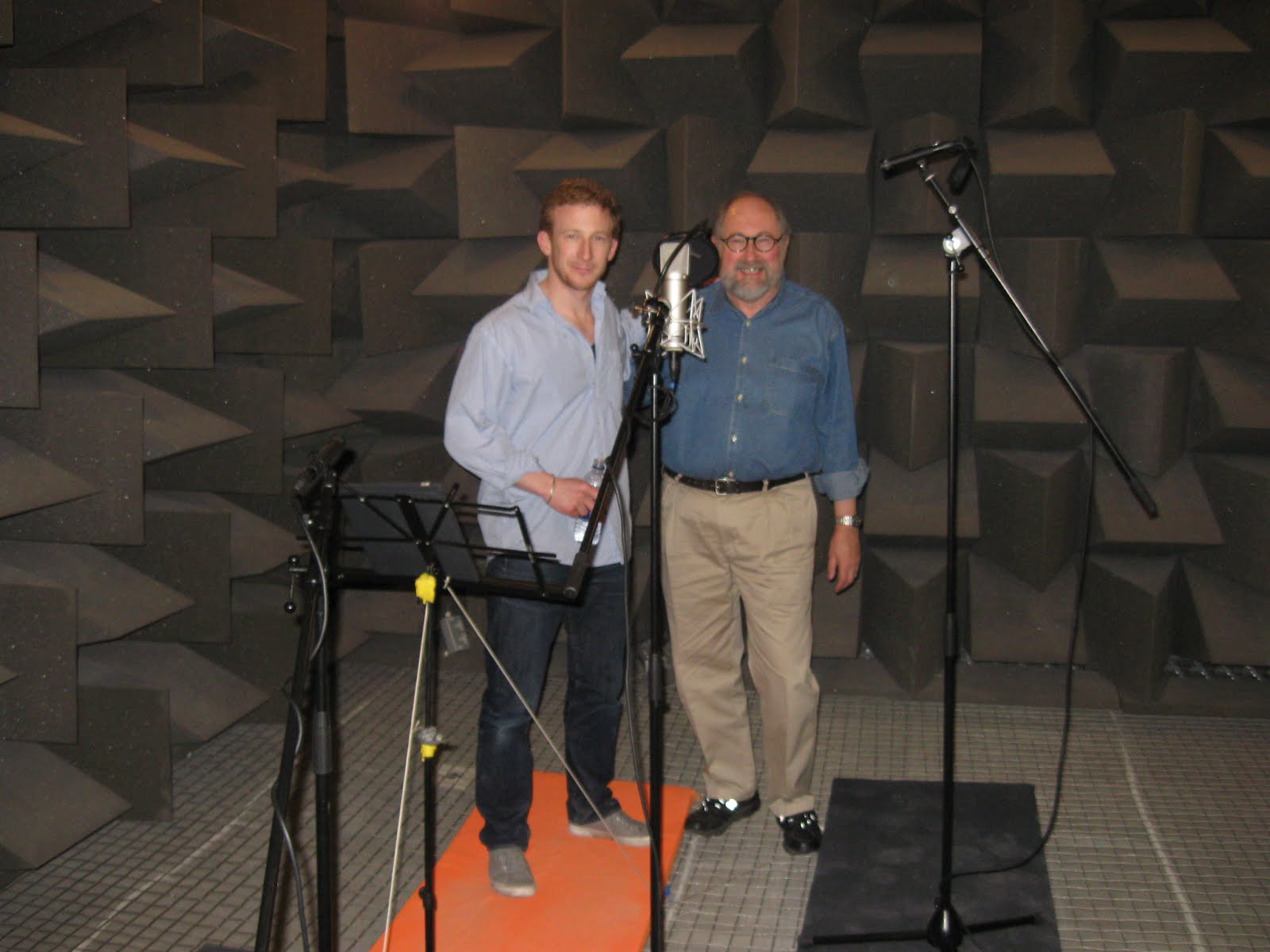The Virtual St Paul’s Cathedral Project is the result of years of work by an exceptionally talented, dedicated, creative, and hard-working group of people.
With the support of a Digital Humanities Implementation Grant from the National Endowment for the Humanities (awarded in 2015), the Project enables us to experience worship and preaching at St Paul’s Cathedral in the 1620’s as events that unfold over time and on particular occasions in London in the early seventeenth century.
The Project has been the work of three co-Principal Investigators.

John N. Wall, an Episcopal priest and Professor of English in the College of Humanities and Social Sciences at NC State University, planned the project, applied for funding, coordinated the work, and created the website.
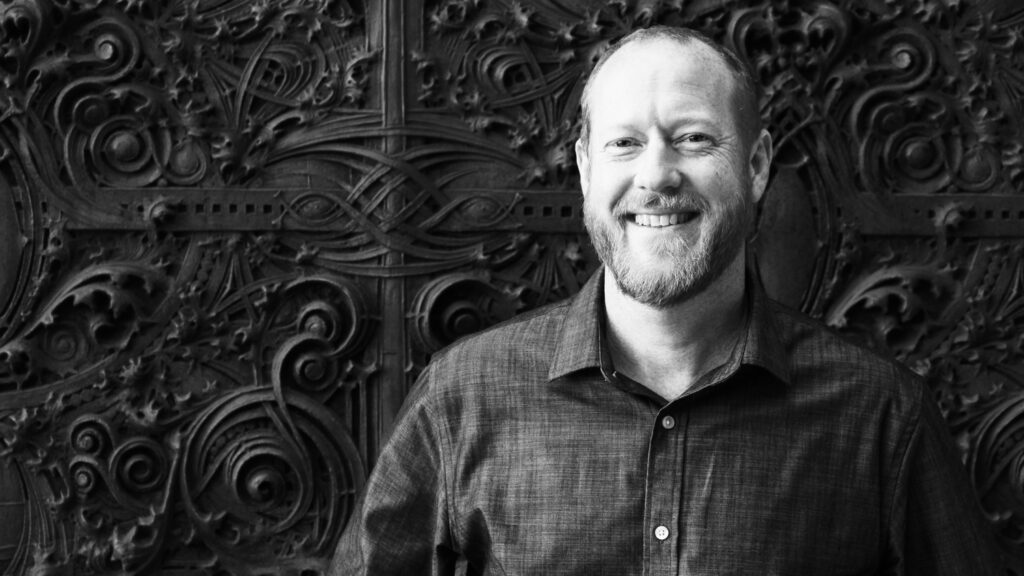
David Hill, Professor of Architecture in the College of Design at NC State University, supervised graduate students in architecture who created the Visual Model, designed the project’s website, and created the fly-around video and the rendered images of the model.
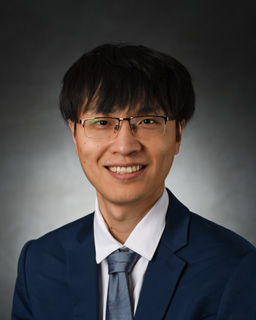
Yun Jing, formerly Associate Professor in the College of Engineering at NC State University, now Associate Professor in Acoustic Engineering at Penn State University, supervised undergraduate and graduate students in Engineering at NC State University in development of the I-Pack Simpa software and the process of auralizing sound files for use in the Project.
The Visual Model
The Visual Model recreates the fabric of St Paul’s Cathedral as we believe it to have been in the 1620’s, along with the buildings that surrounded it in Paul’s Churchyard.
Work was begun on the Visual Model as part of the Virtual Paul’s Cross Project.
Chief model builder on that Project was Joshua Stephens, graduate student in architecture, NC State University. Josh’s colleagues in the Masters in Architecture program also worked on the Paul’s Cross Project. Craig Johnson and Chelsea Sacks developed the template for the website. Jordan Gray did renderings of the Visual Model for the website.
Work resumed on the Visual Model when we received our second NEH Digital Humanities grant in 2015. Graduate students in NC State’s College of Design who have worked on the Visual Model since then include Grey Isley, Eli Simaan, Scott Needham, Andrew McCall, Cameron Westbrook, Smith Marks, Austin Corriher, and Caroline Cox.
For the current stage of the website, Austin Corriher rendered the images for use on the website. Caroline Cox created the fly-around video.
Grey Isley has had a special role in the Cathedral Project. After working extensively on the Visual Model while a student in NC State’s Masters in Architecture program and taking a few years off, Grey resumed work on the Project as a student in NC State’s PhD program in Design. Grey also created the first draft of the Virtual Reality installation of the Project, about which there is more information elsewhere on this site.
Jackson Bostian, a graduate of the Art + Design Program at NC State, revised the Virtual Reality installation and brought it to its current state of functionality. Also assisting in the process of revising the Virtual Reality installation has been Tom Shannon of Epic Games.
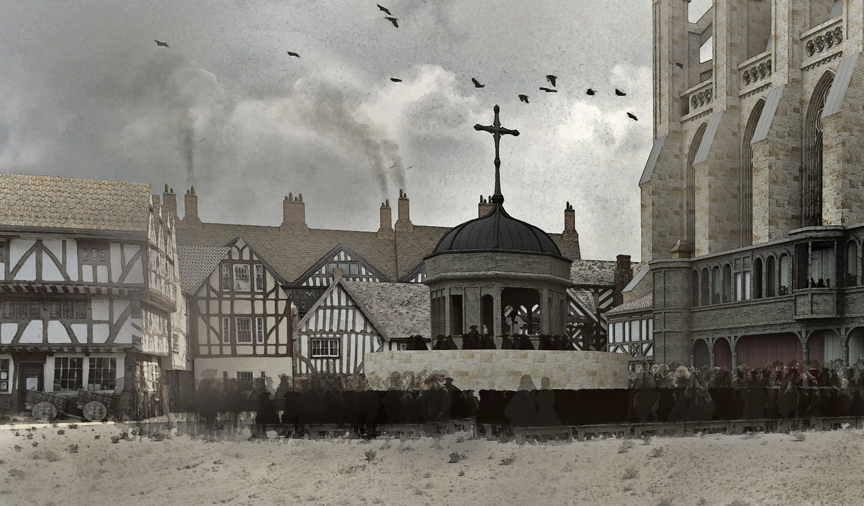
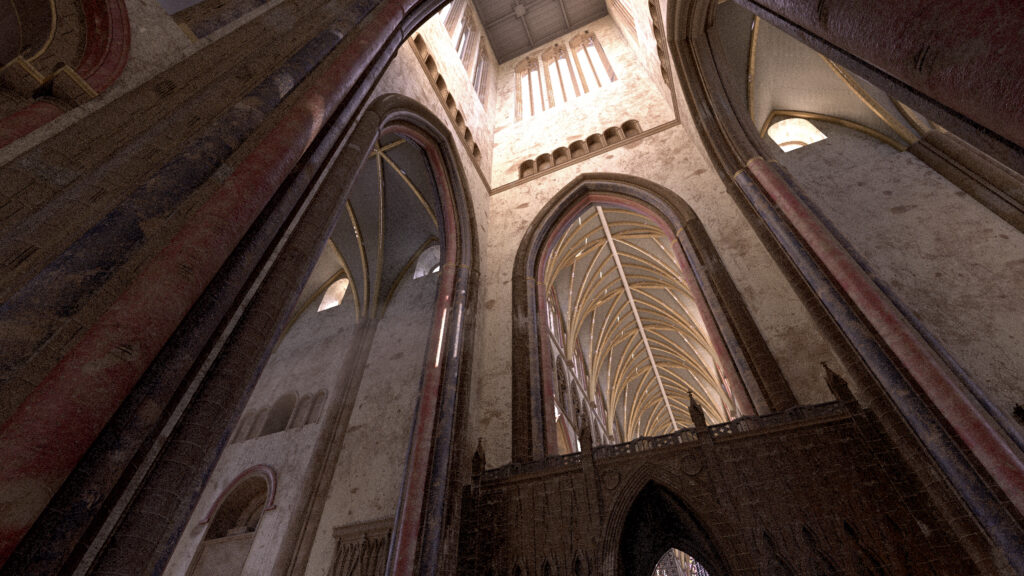

Invaluable to this project from the beginning has been the involvement of the distinguished architectural historian John Schofield, long-time archaeologist at St Paul’s Cathedral, author of St Paul’s Cathedral Before Wren (2011) and a host of other books and articles on the official and domestic architecture of medieval and early modern London.

John has brought a lifetime of knowledge about the buildings of medieval and early modern London to our work. He has been a steady guide through the complexities of building design. I like to say to our visual modelers that if John says their realization of an early modern London building is satisfactory, we do not need to worry about what anyone else says about it.
John has worked actively on the Pauls Cross and Cathedral Projects as advisor to the visual modelers at NC State as well as supervisor for folks on the staff of the Museum of London Archaeology (MOLA) who did some of the most complex modeling tasks, including the Great Rose Window (Mark Samuel), the main parts of the walls and vaulting (Carlos Lemos), funeral monuments (Juan Jose Fuldain), the choir stalls (Hannah Faux and John Schofield), and the bishop’s throne and lectern by John Schofield.
John spent most of his career as an archaeologist at MOLA. We were honored when MOLA featured the Cathedral Project in its official 2019 calendar.
The Acoustic Model
The Sound Files
The acoustic side of the Virtual St Paul’s Cathedral Project has two parts — the production of sound files and the auralization of those files so that we can hear them as though we were inside St Paul’s Cathedral when those events happened the first time.
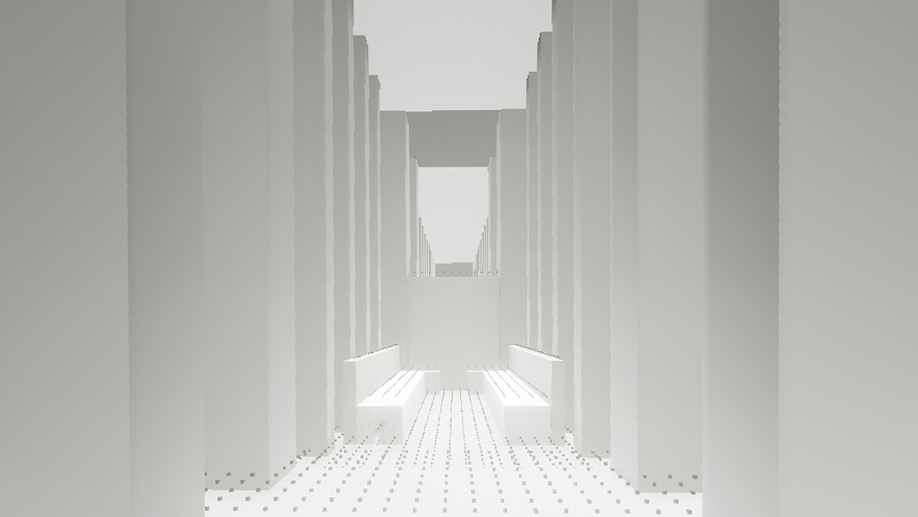
The sound files include spoken word performances of texts from the Church of England’s Book of Common Prayer (1604) and Bible readings from the Authorized (King James) Version of the Bible. They also include two sermons, the first Bishop Launcelot Andrewes’ sermon for Easter Day 1624 and the second John Donne’s sermon preached in the Choir of St Paul’s Cathedral on that day.
The sound files also include choral settings of canticles and anthems, with accompanying organ, as well as chanted texts from the Book of Common Prayer.
The scripts of for all the worship services and the sermons were prepared in early modern London dialect by David Crystal, linguist, United Kingdom. David can also be heard delivering his script of Bp Andrewes’ Easter Day sermon
The recording of Donne’s sermon for Easter Day 1624 was made by Ben Crystal, actor, London, United Kingdom.
The parts of clergy taking part in the services on Easter Day and the Tuesday after the First Sunday in Advent are performed by the British actors Colin Hurley and William Sutton.
The role of the Choir of St Paul’s Cathedral was played by the Choir of Jesus College, Cambridge University, under the direction of Choirmaster Richard Pinel. Organ music in these recordings was played by Pinel and the Organ Scholars of Jesus College.
Members of the Choir in these recordings included the following students at Jesus College :
Sopranos: Amy Butterworth, Dorothy Hoskins, Sarah Mansfield, Elizabeth Nightingale, Jacqueline Row, Serena Shah, Martha Spencer
Altos: Dewi Eburne, Matthew Rogers, Anna Semple, Victoria Taylor, Laurence Trowsdale-Stannard, Joanna Ward
Tenors: Jack Bazalgette, Glen Dempsey, Hamish MacGregor, Jacob Oberholzer, Owen Winter
Basses: Harry Cheatle, Ben Dennes, Edwin Jarratt-Barhnham, Tom McIver
Organists: Dewi Rees and Jordan Wong
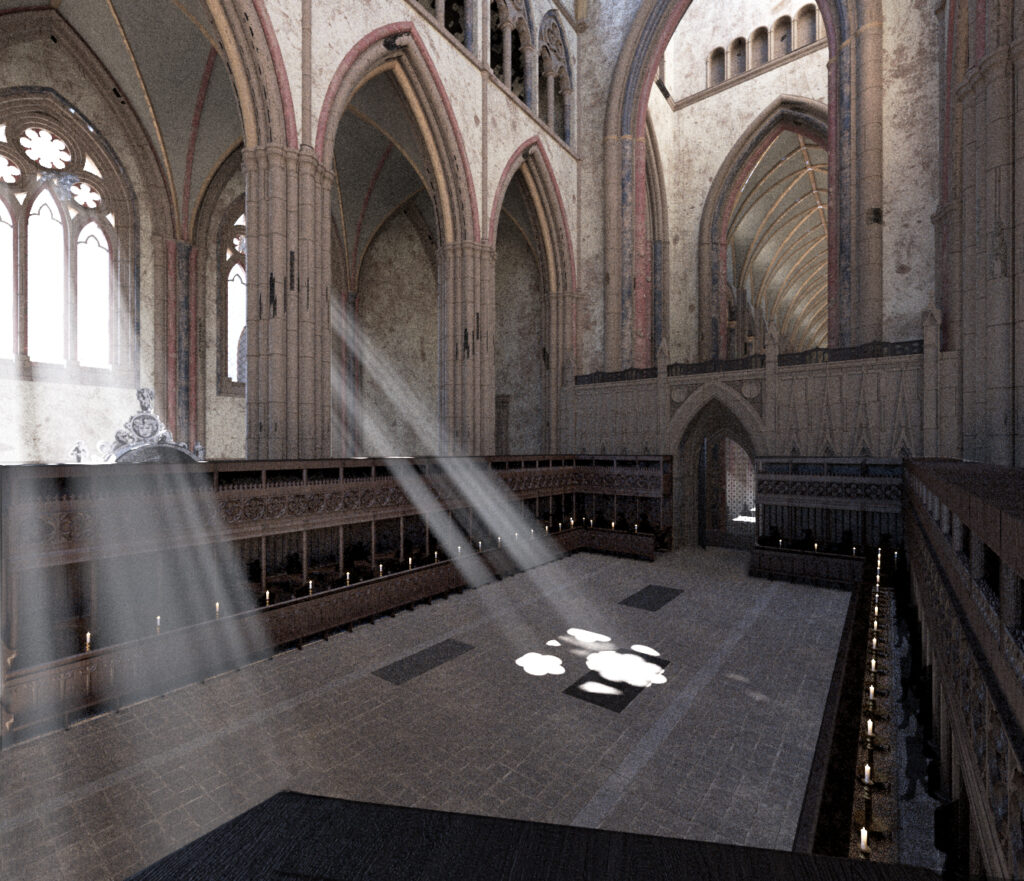
All recordings of choral music and of spoken texts, except those made by Ben Crystal, were made in the Studio of the Faculty of Music at Cambridge University, on West Road in Cambridge. The recording engineer Matthew Dilley, of About Sound, organized the recording sessions; the recording engineer Daniel Halford conducted the recordings.
Ben Crystal’s recording of John Donne’s Easter Day sermon and other material were made at the Sans Walk Studio in London. Matthew Dilley was the recording engineer.
The part of the crowd disporting itself in Paul’s Walk (ie the Nave of St Paul’s Cathedral) was played by members of the faculty in linguistics and their graduate students at NC State University, gathered in Post Pro Studio in Raleigh, NC, with technical support provided by Matthew Horton, acoustic engineer.
Important roles in organizing their participation were played by Walt Wolfram, Director of our Linguistics program, and his colleagues Erik Thomas, Robin Dodsworth, and Jeff Mielke.
Roger Bowers, Emeritus Reader in Medieval and Renaissance Music at Jesus College, Cambridge University, has been invaulable to the acoustic dimension of the Virtual St Paul’s Cathedral Project from the very beginning.
Bowers, best known for his English Church Polyphony: Singers and Sources from the Fourteenth Century to the Seventeenth (1999), has researched and published widely on subjects relating to English choral music in the post-Reformation period, especially in regard to the role of choral music in the liturgical life of English cathedrals.
For the Virtual St Paul’s Cathedral Project, Bowers has chosen the repertoire of music for worship at St Paul’s in the 1620’s, advised on the nature of choral performance and the role of the choir in the cathedral community, and helped us model the Almoner’s House in Paul’s Churchyard, home of the Cathedral’s Choir in the 1620’s.
Auralization
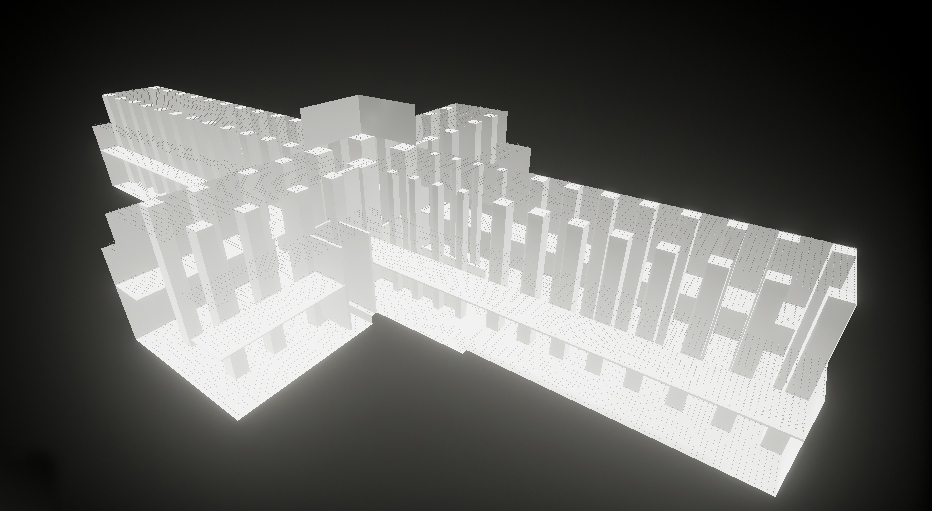
Turning the recordings made in England into the sound files heard on this website — heard as though we were hearing them inside St Paul’s Cathedral in the mid-1620’s — has been the work of several hands.
Recording engineer Daniel Halford began the work of organizing the files into usable material. The editing was completed by Neal Hutcheson, an Emmy Award-winning documentarian and film-maker, who works at NC State University on the staff of the linguist Walt Wolfram.
Grey Isley (see more above on Grey’s role in ths Project) created the Acoustic Model.
Seth Hollandsworth, a student in computer science and mechanical engineering at NC State University, carried out the auralization process.
Dr Paul Broyles, Lecturer, Department of English, NC State University, created the 2-minute video that compares changes in the sound of recordings heard from different listening positions in the acoustic model of the Choir of St Paul’s Cathedral.
THE WEBSITE
The websites for the Virtual Paul’s Cross Project, the Trinity Chapel Project, and the St Paul’s Cathedral Project have all been either newly designed or thoroughly revised by Trevor Healey, a student in the MArch graduate program in the College of Design at NC State University.
Administrative Support
Administrative support for this project was provided, in the College of Humanities and Social Sciences, by Dr. Thomas Birkland, Associate Dean for Research in the College, assisted by Missy Seate, Director of Research Administration; Paula Braswell, Research Manager; and Joyce Jones Christian, Pre-award Specialist.
Additional support was provided by Stephanie McBroom, Program Assistant in the Department of English, NC State University.
Administrative support in the College of Design was provided by Felicia Womack, Assistant Dean for Budget and Administration, and by Ginny King, Director of Research Administration and Nichole Evans, University Program Associate.
Administrative support in the College of Engineering was provided by Dr John Gilligan, Associate Dean of Engineering, Research and Graduate Programs in the College and by Derek Long, Accountant in the Department of Mechanical and Aerospace Engineering.
Special thanks for support and encouragement throughout the course of this project go to Dr Jeff Braden, Dean, College of Humanities and Social Sciences; to Dr Mark Hoversten, Dean, College of Design; to Dr Louis A. Martin-Vega, Dean, Collge of Engineering; to Dr. Laura Severin, Head, Department of English; and to Greg Raschke, Senior Vice Provost and Director of Libraries, all at NC State University.
Special thanks go to Dr Antony Harrison, Head of the Department of English at NC State University in the early 2010’s, for his support for Dr Wall in the years of developing the Project’s proposal for the National Endowment for the Humanities.
